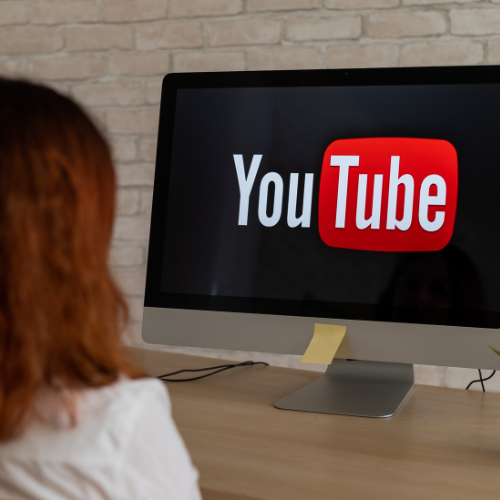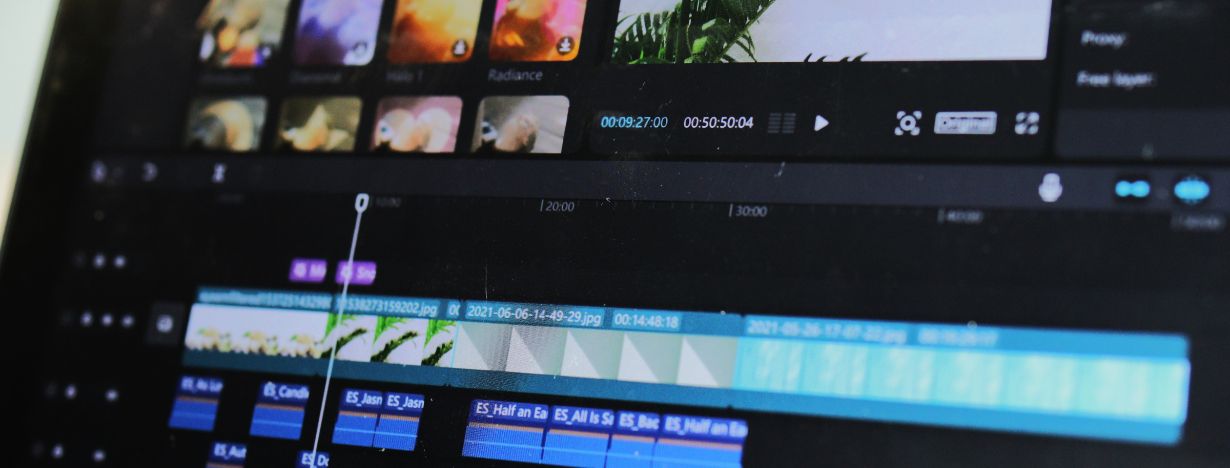
Table of Contents
In the last couple of years there has been a big increase in the amount of faceless YouTube channels being created. Many “gurus” are pushing them as a new way to make money online as an affiliate. Even though faceless channels have been around for many years.
There are two main reasons;
First we have SEO affiliates that are diversifying traffic away from Google, thanks to their helpful content update.
Secondly, with the rise of A.I tools, it's much easier to create faceless YouTube channels. Even though it's a big misconception that faceless channels are just AI generated. There are plenty of channels where you never see the creators face – but they deliver still high quality and great value to the viewer.
Many SEO affiliates are put off by the thought of doing YouTube.
The most common reason is because they don't want to be on camera.
By creating a faceless YouTube channel, you don't have to be…

This guide is going to take you through the steps on how to start a faceless YouTube channel, but first it's probably worth understanding why. The why is always more important than the how.
YouTube is an incredibly powerful platform.
It can generate traffic, ad revenue and affiliate commissions.
The key is what it can do for your brand, whether you have an affiliate website or you're trying to develop your personal brand. YouTube can help to build authority, trust and show that you're an expert in your field.
Below are 5 key reasons why YouTube is worth your time and effort;
Like I mentioned before, channels without the creator appearing on them is nothing new.
Although over the last couple of years there has been a massive increase in them. This is mostly down to AI tools using stock footage to create videos. Unfortunately most of it is pretty low quality.
This does create opportunity for creators that want to focus on quality.
Lets face it, there are some very good reasons why you might want to create a Faceless YouTube channel;
If you come from an SEO or affiliate background or you just don't want to be on camera, creating a faceless channel is a great opportunity.
Faceless doesn’t mean low quality.
The key is to focus storytelling within the video and showing this with the script and the visuals you plan to use. This is what will make your videos polished and your channel high performing.

There are a number of different types of Faceless channels, the type you do would depend on the niche that you're in.
The success of your YouTube channel can depend on the niche that you pick.
You want to focus on picking a niche that you’re passionate about, as this is going to keep you motivated and interested in creating content.
At the same time you want to focus on a niche that has a target audience. It might be competitive but that is true for most niches, although you may want to niche down.
The health niche is massive and is only going to continue, however to get started you might want to focus on an aspect of health. For example brain health.Guess what…UberNet has offers that can help you monetize that niche 🙂
When picking a niche you want to focus on;

You’ll struggle to have a successful YouTube channel if you don't create one. There are a few things you need to consider when creating your channel.
First of all you need to come up with the branding for your channel. This is basically the channel name, logo and general color scheme of your branding.
The name of your channel should represent the niche you're trying to get into. (unless of course you're building a personal brand around your own name..then it should be pretty easy to come up with the channel name!)
Make sure your channel name has your main keyword in it, for example BrainInsights, NootropicKnowledge or even Health Made Simple.
Try and come up with a channel name that has not already been used, you want to be able to get your brand name as your YouTube handle. (That's basically the @channelname)
Next step is to create the logo, which can be done using Canva.
Once you know what your channel name is going to be, create a Google account and create a YouTube channel.
Do not use your personal Gmail account, keep it separate.
I’d always recommend getting your logo and channel art done, as well as your bio and any links added.
This can obviously be updated, but good to get something there first of all to show any potential viewers that you’re a proper channel.
It can be tempting to just start recording whatever videos come to mind, believe me I’ve done this in the past.
The problem with this is that you end up running out of ideas on what content to create or you create content that no one is looking for. Wasting your time and killing your motivation.
What you need to do is see what works for your competitors and see how you can use that as inspiration.
The first thing you need to do is gather a list of your competitors.
Use YouTube and search for your main keywords. Filter this by channels and add them to a spreadsheet.
Make sure to get channels of all sizes.
You can also use a chrome extension called SimilarTube to find related channels.
Next you need to reverse-engineer these channels.
Use VIDIQ chrome extension to spot videos that are outliers. This basically means videos that get more views than average for that channel.
Add these to a spreadsheet.
You then also want to look for;
Use this data to create a plan on what content you’ll produce. I would recommend getting enough video ideas for the next 3-6 months worth of content. More if possible…
Top Tip: Aim to get video ideas on different topics IE Buyer intent, problem solving and comparison/review focused.
Now it's time to create your first videos.
One thing to remember is that producing and publishing a video is much better than perfecting a video.
You should still aim for quality but it doesnt need to be perfect. First of all you just need to hit publish and learn what people want and what they don't want.
The first step is to get the script/story to your video sorted. For this I’d have the main focus/point of the video and then expand from there.
You might look at related videos and get inspiration or even use AI to write the first draft or a rough outline.
From here you would then flesh it out into a script for you to follow.
I’d aim to not just use AI for this. The key is to get your personality into the videos, so the content really needs to come from you.
If you already have an article written from an affiliate website. You could put it into AI and ask it to write a YouTube script. Just remember to edit/improve on it.
One way to help with scripting is to storyboard a video. This also helps with the later step when you create the actual video
Once you have your script, it's time to record the audio.
For this I would NOT recommend AI.
No matter how good the tools are, you can always tell AI. I’ve tried to replicate my voice a few times but it's just not good enough.
I would personally suggest recording your own voice when doing voice overs.
This is also going to help with consistency.
It's going to be tough getting superfans if the voice of your video changes every so often.
And yes you could argue that many faceless channels are not bothered about returning viewers as they just want to mass produce content. For long term growth on YouTube, you want to build a community and trust with your viewers.
Simply load up voice recording software, I just use a sound recorder that's free on windows. Hit record and read through your script.
Don't try and do it in one take, if you make mistakes don't worry. You can always edit those out.
You might be wondering why we recorded our audio first. It's the voiceover that's going to determine how long the video is going to be.
If you spend time producing the video and then find out that the audio is 4 minutes less, you’ve just wasted time editing.
There are going to be a couple of places you can get video footage, of course it's going to depend on your niche as to what footage you need.
Stock Footage
You can get a wide range of stock footage, using both videos and still images. For videos you might use something like StoryBlocks.
You can make stock images look decent by adding a slow zoom to it.
Your Own Recorded Content
Got a phone or a camera?
Why not record your own footage. You don't have to be in the shot.
Doing a product review or unboxing, just record the footage of your opening and showing the product.
Got a video about improving brain function, recording your hands completing some complicated maths.
I’ve been playing with the idea of doing a faceless travel channel. Whenever I go away now, I simply record parts of my trip but keep my face out of it.
Screen Recordings
Depending on your niche, a great way of getting video footage is through screen captures. This works very well for tutorials/how to style videos. For example, how to use a specific type of software or tool.
Now it's time to edit and put it all together to produce your first video.
There are a number of free tools such as Davinci Resolve. My personal favorite is CapCut.
You can get the desktop version and this offers a lot of great features. It even includes some AI functions to remove silences, “hmms” and even has a wide range of transitions.
Drop your voice over in place and then match up the video footage to match. Don’t worry about too many effects, initially we want it basic and authentic.
Again we don't want perfection, you want to look back at each video and slowly improve them a little each time.
The most important thing on any video is the audio. Try to make this as clear as possible.

Great, your video is done but we now need to upload it to YouTube and there are a couple of things to think about.
The thumbnail is one of the most important things to focus on when it comes to YouTube. Why?
It's the first thing the potential viewers see, so you need to grab their attention with it. It has to spark enough interest to make them read the title and hopefully click through.
I would recommend using clear and bold text. You also want to use high contrast colors to make elements stand out.
Try to keep the thumbnails simple but generate curiosity.
This is where your competitor's research will come in handy, you’ll be able to see what they did for their thumbnails and see how you can improve on this.
You can now add 3 thumbnails to each video. This allows you to split tests to see which thumbnail performs the best.
I would always recommend testing 3 thumbnails with every video you do.
The title of the video is very important, it should generate interest. If you’re just focused on getting traffic from videos in search then you can just make sure it's got the main keyword.
This could result in you missing out on a huge opportunity
There is so much traffic already on YouTube, just focusing on search could mean you missing out on a lot of views.
Use the title to emotionally hook your visitor. You can use a clickbait style title, just make sure you give them what they are looking for in the video.
Include things such as numbers or power words in the title.
For example;
The description is your place to enter a bit of a summary on the video. Try to get some keywords within the description.
With my descriptions I’ll always include a question to encourage comments and timestamps.
This adds chapters to the video, encouraging viewers to click to key areas.
NEVER include affiliate links in the description. I’ve seen reports of silent bans IE low view performance.
Instead I would recommend creating a pinned comment and adding any affiliate links in there.
This might be your first video but you want to get in the habit of adding end screens to your videos.
End screens are where you add a recommended video for your viewers to watch at the end of the current video, as well as a way to subscribe.
You should ALWAYS do this. If they go on to watch another one of your videos it helps to tell YouTube what your videos are about and that people like them.
The key is to ensure that you are recommending related videos. You need to funnel viewers properly.
An example might be recommending the video ‘5 Foods That Lower Brain Functions’ at the end of a video that is talking about foods that increase brain function.
Cards are basically call outs to other videos you’ve done, these cards appear at the top right of the video.
As an example, let's say you have a Mind Lab Pro® review. During Content about ways to increase brain function, you might mention using Mind Lab Pro® – then suggest they watch your review of the product.
One thing to always remember;
YouTube wants to keep people on the platform for as long as possible. If you can keep your viewers on your channel and watch more content from you, this is a good thing!
The next thing you need to do is work on your next video. Then after that you work on the next, then the next and finally the next. You see where I'm going with this right?
You are very unlikely to see views on your first video, your first 10 videos or even your first 100.
Just keep at it.
With each video, you want to continue to improve an element of it. Whether it's the title, the thumbnail, the scripting or the audio.
The key is NOT TO GIVE UP!
Once you create your channel, feel free to reach out to me and I’ll be more than happy to review it and give some comments/suggestions on your content.